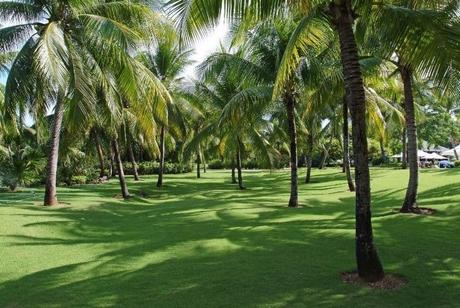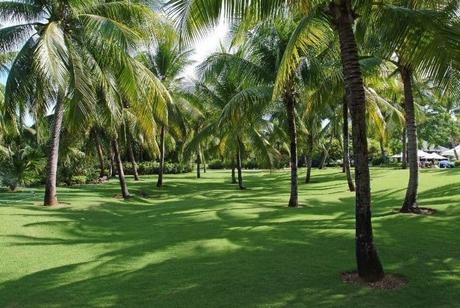How Long Do Palm Trees Live?
You have probably witnessed the spectacular beauty of palm trees at some point, and now you want the same beauty in your home garden. Luckily, this can be a reality for most of us! Growing palm trees is fairly simple and once you follow the right care instructions, they will take their lofty shape in a couple of years. But how long will these trees thrive? What is the average lifespan of a palm tree?
Well, these are some of the many questions we will explore in this article. So, if you are fond of palm trees and are planning to get one at home, here’s everything you need to know.

How Long Will a Palm Tree Live?
The average lifespan of Palm trees entirely depends on their species. Usually, the variants growing in warm environments can survive anywhere between 7 to 10 decades. However, you can also enhance this lifespan by caring for the palm and using the right fertilizers for its growth.
Typically, the lifespan of palm trees tends to vary depending on their type. For instance, species like the Mexican Fan Palm are known to have an average lifespan of 10 decades, giving and taking a couple of years as per their existing habitat.
Alternatively, you will find other species like the Coconut Palm that only live for 8 to 9 decades. Again, you will find Date Palms that are known to thrive for 10 decades just like Mexican Fans, however, most date palms end up falling due to their lofty height. In some instances, they do not even thrive until aging.
Areca Palm is probably one of the species with the lowest life span. Unlike its strong competitors, it only ends up living for 4 decades at once. Despite their fairly short lifespan, many people consider keeping them at home. You will also find that they are much smaller when compared to their longer thriving counterparts. This further explains the cause of a short lifespan.
What Palm Trees Can You Plant Around Your Home?
Several palms turn out to be ideal for homeowners. Some of the popular ones are listed below:
- Jelly Palms
- Date Palms
- Bamboos
- Spindle Palms
- Fan Palms
- Princess Palms
- Areca palms
- Christmas Palms
What Is the Life Cycle of a Palm Tree?
The life cycle of Palm trees comprises multiple stages. In this section, we will take a closer look at them.
1. Germination
As evident from the title, this is the stage when your palm tree will gradually start developing roots. Regardless of the species of the palm tree, you have brought home, you will either work with a complete monocot or a small plant whose natural growth can only be observed through the sprouting of one leaf.
However, the germination of all palm trees does not take place the same way. Typically, there are two processes. The first one deals with remote growth and during this process, you will find small steam sprouting from the plant even before the roots start sprouting.
The second method is known as adjacent sprouting and here you will find the leaf partially emerging right through the seed. After this, the root system of the plant will grow from the ‘button’ or that specific area of the leaf that is already growing.
2. Vertical and Calliper Growth
Interestingly, the process of germination alone is the most difficult one when it comes to your plant’s life cycle. Once a leaf or a shoot has sprouted from the plant, you can soon start expecting it to take a lofty height over the next couple of years. Also known as Vertical Growth, during this stage you should position the leaves in a way that they go upward. Eventually, the dried and weary leaves will fall out from the thick trunk.
After the vertical growth, you can start expecting caliper growth. At this point, it is worth noting that the trunks of palm trees do not resemble any other tree. They do not come with the same kind of wood. That is why your plant will require some tissue widening techniques if it is looking to stay completely steady and high. The tree will start widening with age. However, the growth of its caliper will never cease.
3. Blooming
As the palm tree starts maturing, it will begin blooming during the warm, summer months. Yes! Palms do bear flowers. Quite noticeably, these flowers will not be as stunning as you would see in other trees. The flowers borne by palms are puny. In some situations, you cannot even locate them from a short distance. They grow in clusters and are usually whitish.
Palm trees also do not bear flowers annually. Certain species of the plant may only bear flowers once throughout their lifespan. Others will feature flowers that eventually take the shape of fruits, annually.
4. Fruition
As with every other plant, you need to rely on the local pollinators when it comes to your trees’ fruition. Some of them like bats or even bees can move the pollen from multiple trees, eventually disseminating them among the plants. This way, your flowers will eventually take the shape of the fruit.
Just like the flowers, the palm fruits tend to thrive in tiny clusters, and you can immediately harvest them after the ripening process. In case you don’t, the animals inhabiting your local habitat might end up devouring them.
5. Death
Most palm trees follow the usual pattern of flowering and fruition throughout their lives. Finally, when the trees reach the fag end, their fronds and the calipers will start dying. Your palms may also end up with a faster death when they are subjected to high stress. In other instances, they may die from natural disasters. After death, you can replace the spot with a new tree or get yet another palm tree and start the process from scratch.
What is the Average Life Span of a Palm Tree?
The average lifespan of a palm tree is between 7 to 8 decades. However, some only live for forty years, and others can live up to a whopping 100 years. Since this entirely depends on the species of the palm tree, it is best to research the different types before finalizing on a specific one.
How Can You Tell A Palm Tree’s Age?
The easiest way to determine a tree’s age is by counting the total rings featured on the trunk. Unfortunately, since palms do not bear such a thick or dense trunk, you cannot tell the same for them.
While there are several ways to determine your tree’s age, the most reliable method is by assessing its history. Your palm tree’s lifespan will depend on its species. For instance, green thatches may live for 15 decades while oil palms will only survive for 25 years.
Another thing to check is whether the palm has survived during radiocarbon dating. You may get this detail from a representative of a national park. This is a completely scientific method that assesses the growth rate of the tree by checking the chemicals. This method, however, is contested because it doesn’t consider the factors (like habitat and ailments) that may hinder the growth of the plant at any stage.
Are Palm Trees Dangerous?
While most palm trees are completely safe, some of them may end up being dangerous. In case you haven’t guessed already, we are talking about spiny palms. Several palm trees, especially the ones growing in tropical regions like California exhibit spines. They are not just unsafe when it comes to blundering but they may be equally risky during the pruning process.
Though we understand that certain palms need to be spiny for creating a protective shield against prying pests and animals, the ones with extremely large clusters of teeth or thorns should be avoided for safety reasons.
Why Do Palm Trees Die?
Palm trees may die from several reasons, the primary one being diseases. Very often, palm trees end up catching deadly bacterial infections that don’t merely stunt their growth but also lead up to their death. Other instances may include uprooting, overwatering, or high humidity.
If your tree is located in a humid zone, it might as well be susceptible to Pink rot. You can identify this rot by locating the small pink circles along with the leaves. The easiest way to treat Pink Rot is by snipping the leaves prematurely. However, to do that, you also need to be extremely observant.
Other common reasons for death include fertilizer burn (that happens when you use excessive amounts of fertilizer), infestation from pests, and lightning attacks.
Well, that was our detailed take on palm trees. So, in case you are planning to set them up at home, first understand their lifecycle, growth requirements, and then finally proceed to plant them. Since you also know now why palm trees tend to die, you also have a clear idea about what exactly to avoid while caring for these trees. Explore your options, pick a beautiful palm tree, and you will soon end up transforming the look and feel of your entire home.


